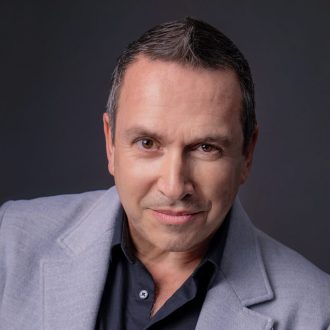With Unique Model, Santa Barbara Comms Firm Confronts National Health Crises
Idea Engineering’s Turnkey Campaigns Address Suicide, Fentanyl, and Other Pressing Issues

Many of the employees at Idea Engineering, like most people in America, have been touched in some way by drugs or suicide. It makes the work of the Santa Barbara communications firm all the more meaningful, and all the more effective.
“We really do care,” said CEO Simon Dixon, rolling up his sleeve to show the “STAY” tattoo on his forearm, the name of the company’s new suicide prevention campaign. “If we were in this for the money, we’d be selling cars and candy bars.”
Dixon and his team produce what they call Turnkey Campaigns ― ready-to-launch public education packages that address some of the deadliest issues affecting communities across the U.S., including the scourge of fentanyl. Here in Santa Barbara County, the number of fentanyl-related deaths increased by nearly 300 percent over the last two years.

The all-inclusive packages ― TV and radio spots, posters and flyers, social media messaging, websites with local resources, and so on ― are licensed by regional governments and health organizations that lack the in-house staffing and resources to conduct meaningful outreach on their own, especially when time is of the essence.
“In public health campaigns, delays equals bodies,” Dixon explained.
As of last week, Santa Barbara, Ventura, and Orange counties have all subscribed to Idea Engineering’s Fentanyl Is Forever campaign, which is being delivered in English, Spanish, Vietnamese, Farsi, and other languages. The company has clients throughout the country, from Georgia to Florida and all over California, and they’re open to negotiating their rates with smaller communities.
“At the end of the day, we just want this stuff out there,” Dixon said.
The campaigns, emphasized Dixon ― a deep-thinking and widely respected guru of public communication ― are heavily researched and evidence-based. Advisory groups of experts help create content that’s authentic and speaks to the individual human experience behind these often faceless issues.
“You need to approach people in a way where they’re actually getting the information they need,” Dixon said. “Don’t try to convince them. Instead, give them truths they’re looking for.”
With respect to the STAY campaign, former NFL quarterback and suicide attempt survivor Erik Kramer helped create the emotional arc of its messaging. “In the final weeks, I was only seeking my own counsel, and I only had one solution to my problems,” he said in a statement.
“When I think about suicide, I find myself splitting the word ‘hopeless’ into its two parts, ‘hope-less,’” said Dixon. “When you have lost all hope, you lose sight of the future. There is no sun coming up over the horizon.” The STAY campaign, he explained, asks people to do just that, to stay, and to give themselves the time, with help, to find hope and a reason to be alive.
“The goal is to make people pause for an extra second so they can make the best decision,” Dixon continued. Especially among teens. “Young adults are reflexively opposed to authority figures,” he said. “We want to invite them to have power over their own lives.” The initiative also targets high-risk groups, including LGBTQ+ individuals, veterans, first responders, and the elderly.
All of STAY’s components, explained Jeanne Spencer, Idea Engineering’s chief creative officer and Dixon’s longtime collaborator, link people to the national Suicide & Crisis Lifeline, 988. As well, QR codes, clickable digital ads, and web addresses connect people to local resources. “Lives are being lost and families are being destroyed,” Spencer said. “These are tools that can make a real difference in communities.”
For more information, visit ideaengineering.com.




You must be logged in to post a comment.